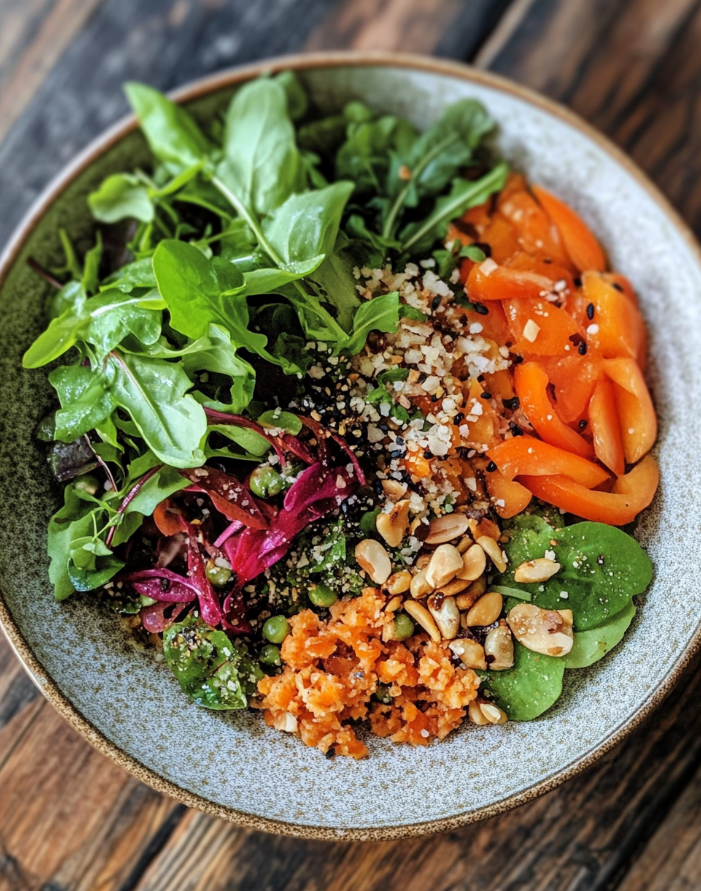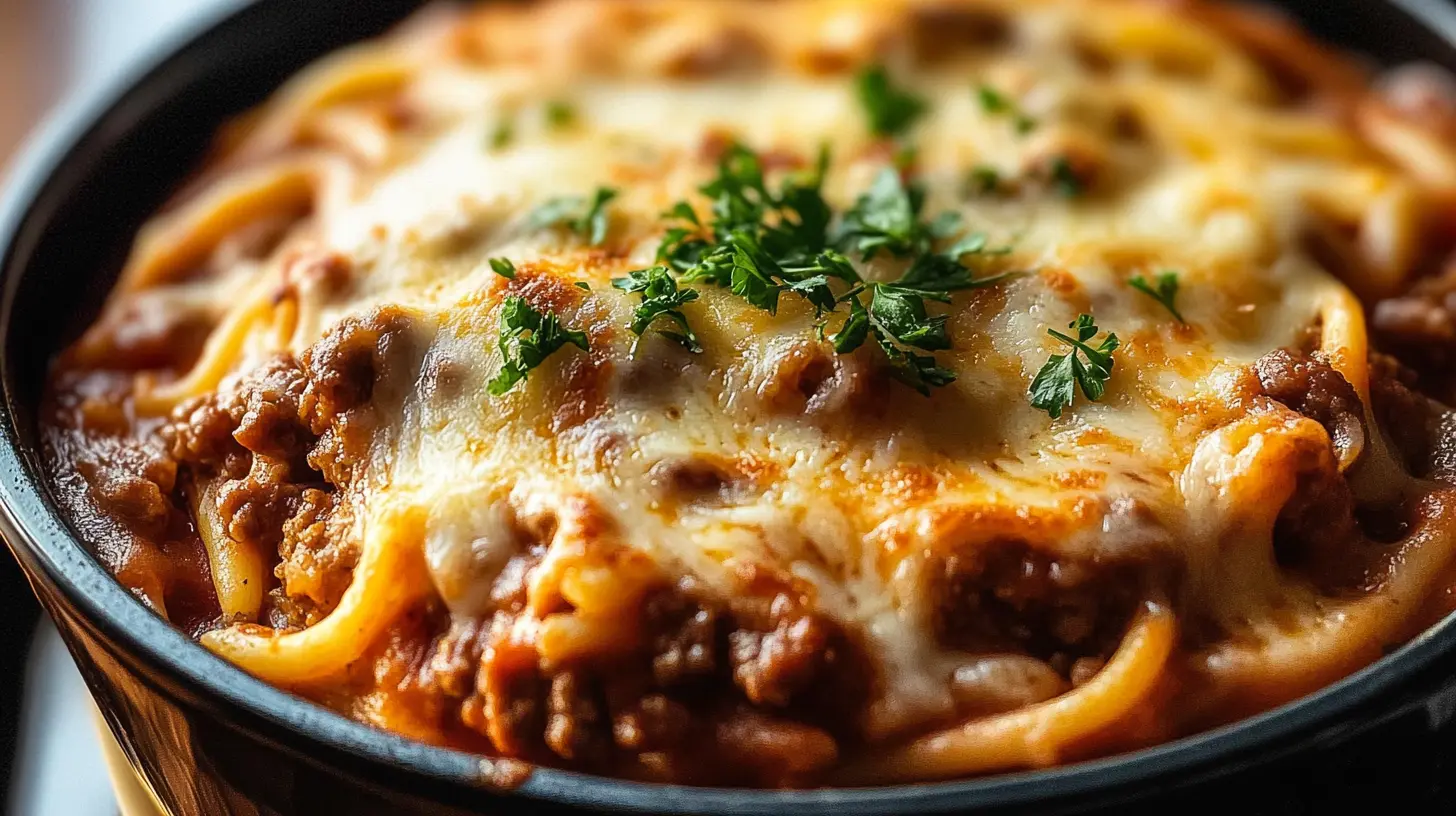Introduction to Alkaline Diet Recipes
Are you looking for a way to balance your diet and enhance your overall health? The alkaline diet recipes offer a fantastic approach to achieving this goal. These recipes focus on incorporating foods that help maintain your body’s optimal pH levels, promoting a more alkaline environment. By including a variety of fruits, vegetables, nuts, and seeds, these recipes not only support overall wellness but are also simple to prepare, vegan, and often gluten-free.
The appeal of alkaline diet recipes lies in their versatility and health benefits. They can be easily adapted to suit various dietary needs, whether you’re a busy parent, a student, or a health-conscious individual. For instance, if you are looking to combine taste with nutrition, these recipes provide flexible options to meet your preferences. Additionally, they offer variety, ensuring that your meals are both delicious and healthy, our Tteokbokki Recipe offers a perfect balance of flavors and can be tailored to your specific preferences. In this article, we will explore the benefits of an alkaline diet, share essential ingredients, and provide a step-by-step guide to preparing delicious alkaline meals. For those interested in more diverse recipes, check out our Cheesy Hot Beef Sandwich Recipe for another satisfying option that complements a balanced diet.
Benefits and Advantages of Alkaline Diet Recipes
The alkaline diet recipes offer a range of benefits that make them a great addition to any healthy eating plan:
Improved Health and Wellness
- Following an alkaline diet can help balance your body’s pH levels, which may improve energy levels and reduce the risk of chronic diseases. The diet emphasizes fresh fruits and vegetables, which are high in vitamins, minerals, and antioxidants. This can lead to improved digestion, better skin health, and enhanced immunity. For those interested in boosting their health through diet, our Chicken Quesadilla Recipe also provides a nutritious and delicious meal option.
Ease of Preparation
Alkaline diet recipes are well-regarded for their simplicity and ease of preparation. Most of the ingredients are not only fresh but also readily available, making it easy to prepare meals without spending too much time in the kitchen. Consequently, this makes these recipes perfect for busy individuals, whether you’re a working professional, a parent, or a student. Moreover, the straightforward nature of these recipes ensures that anyone can quickly whip up a healthy meal.
Versatility and Adaptability
Furthermore, these recipes can be tailored to meet a variety of dietary needs, whether you are looking for gluten-free, low-calorie, or vegan options. The ingredients are incredibly versatile, allowing you to experiment with different flavors and textures to suit your preferences. Additionally, this adaptability ensures that you can enjoy delicious meals without compromising on health benefits. For example, you can easily switch out certain ingredients to better align with your dietary restrictions or taste preferences.
Supports Weight Management
Since alkaline diet recipes focus on whole, unprocessed foods, they can effectively support weight management by promoting satiety and, therefore, reducing cravings for unhealthy snacks. Additionally, by incorporating high-fiber fruits, vegetables, and whole grains, these recipes not only help maintain a healthy weight but also provide essential nutrients for overall well-being. As a result, you can enjoy meals that are both satisfying and beneficial for your health.
Ingredients Overview
Essential Ingredients for Alkaline Diet Recipes
To create delicious and nutritious alkaline diet recipes, you’ll need the following essential ingredients:
- Leafy Greens: Kale, spinach, arugula, and Swiss chard are all excellent choices. These greens are packed with vitamins A, C, and K, as well as iron and calcium.
- Fresh Fruits: Apples, pears, berries, and citrus fruits like lemons and limes help alkalize the body and are high in antioxidants.
- Nuts and Seeds: Almonds, chia seeds, and flaxseeds are great for adding protein and healthy fats to your meals.
- Whole Grains: Quinoa, millet, and buckwheat are alkaline-forming grains that provide fiber and essential nutrients.
- Healthy Fats: Avocado, coconut oil, and olive oil are all excellent sources of healthy fats that support overall health.
- Herbs and Spices: Turmeric, ginger, basil, and parsley not only add flavor but also offer anti-inflammatory properties.
Dietary Substitutions to Customize Your Alkaline Diet Recipes
The alkaline diet recipes can be easily customized to fit various dietary needs:
- Gluten-Free: Substitute whole grains like quinoa or millet for wheat-based ingredients.
- Low-Calorie: Focus on high-water-content vegetables like cucumbers, zucchini, and leafy greens to reduce calorie intake while still feeling full.
- Vegan: All recipes are naturally vegan, but you can enhance them by adding plant-based protein sources like tofu, tempeh, or legumes.
- Keto-Friendly: Although the alkaline diet typically includes more fruits and grains, you can modify recipes by focusing on low-carb vegetables, nuts, seeds, and healthy fats.
Therefore, by making these substitutions, you can enjoy alkaline diet recipes that align perfectly with your personal health goals and dietary preferences.
How to Prepare the Perfect Alkaline Diet Recipes: Step-by-Step Guide
Here’s a step-by-step guide to preparing a delicious alkaline salad bowl, one of the most popular alkaline diet recipes:
First Step: Prepare the Base
- Choose your greens: Start with a generous base of leafy greens like kale, spinach, or arugula. Wash and chop the greens into bite-sized pieces.
- Add fresh vegetables: Include a variety of colorful vegetables such as cherry tomatoes, cucumbers, bell peppers, and shredded carrots for added crunch and nutrition.
Second Step: Prepare the Protein
- Select plant-based proteins: Add a portion of chickpeas, black beans, or lentils. These legumes provide essential protein and fiber.
- Incorporate nuts and seeds: Sprinkle a handful of almonds, sunflower seeds, or chia seeds for a protein boost and added texture.
Third Step: Add Healthy Fats
- Include avocados: Slice half an avocado and place it on top of the salad. Avocados are rich in healthy fats and add a creamy texture.
- Drizzle with oil: Add a tablespoon of extra virgin olive oil or coconut oil to enhance flavor and provide healthy fats.
Fourth Step: Enhance with Fruits and Herbs
- Top with fresh fruits: Add slices of apple, pear, or a handful of berries for a touch of natural sweetness.
- Season with herbs: Finish with fresh herbs like basil, parsley, or mint to brighten the flavors.
Fifth Step: Make the Dressing
- Prepare a simple dressing: Mix lemon juice, olive oil, a dash of apple cider vinegar, and a pinch of sea salt. Shake well to combine.
- Dress the salad: Drizzle the dressing over the salad and toss to coat all ingredients evenly.
Sixth Step: Serve and Enjoy
Serve the salad immediately while fresh. Enjoy this nutrient-packed, alkaline diet recipe as a light meal or side dish.
Mastering Alkaline Diet Recipes: Advanced Tips and Variations
To make the most of your alkaline diet recipes, consider these advanced tips and variations:
- Add Superfoods: Incorporate superfoods like spirulina, chlorella, or matcha powder to boost the nutritional content of your meals.
- Experiment with Fermented Foods: Include fermented foods like sauerkraut or kimchi, which are rich in probiotics and aid in digestion.
- Spice it Up: Use a variety of spices such as turmeric, ginger, and cumin to enhance flavor and provide additional health benefits.
- Make It a Wrap: Use large leafy greens like collard or lettuce leaves as wraps for an alkaline-friendly, low-carb alternative to tortillas.
How to Store Alkaline Diet Recipes: Best Practices
To maintain freshness and flavor:
- Refrigeration: Store salads and fresh vegetables in airtight containers in the refrigerator for up to 3 days.
- Freezing: Avoid freezing fresh salads, but you can freeze ingredients like cooked quinoa or grains separately.
- Reheating: Reheat grains or cooked vegetables in a skillet over medium heat or in a microwave until warmed through. Avoid reheating leafy greens as they can become wilted and lose their texture.
Nutritional Value of Alkaline Diet Recipes
Understanding the nutritional value of alkaline diet recipes helps you stay on track with your health goals:
- Calories: Varies by recipe, but typically low in calories due to the high vegetable content.
- Fat: Mostly from healthy fats like avocados, nuts, and olive oil.
- Protein: Plant-based protein from legumes, nuts, and seeds.
- Carbohydrates: Primarily from vegetables and fruits, providing essential fiber.
- Fiber: High in fiber, which supports digestion and overall gut health.
FAQs: Frequently Asked Questions About Alkaline Diet Recipes
Can Alkaline Diet Recipes Help with Weight Loss?
Yes, alkaline diet recipes can support weight loss by focusing on nutrient-dense, low-calorie foods that promote satiety.
Are Alkaline Diet Recipes Suitable for Vegetarians?
Absolutely! These recipes are naturally plant-based and vegetarian-friendly.
Can I Prepare Alkaline Meals in Advance?
Yes, you can prepare many alkaline meals ahead of time. Store ingredients separately to maintain freshness and assemble when ready to eat.
How Do I Add More Protein to Alkaline Recipes?
Incorporate nuts, seeds, legumes, and grains like quinoa to increase protein content.
What Are Some Good Alkaline Snacks?
Great alkaline snacks include raw vegetables, fresh fruits, nuts, and seeds. For more snack ideas, check out our Neapolitan Ice Cream Recipe that offers a delicious and unique twist on a classic treat.
What can you eat on an alkaline diet?
On an alkaline diet, the focus is on consuming foods that help maintain a slightly alkaline pH level in the body. This diet emphasizes fresh, unprocessed foods that are believed to reduce acidity and promote overall health. Here are the main categories of foods you can eat:
- Fruits and Vegetables: Leafy greens (spinach, kale), cruciferous vegetables (broccoli, cauliflower), root vegetables (carrots, beets), and alkaline fruits like apples, bananas, and berries.
- Nuts and Seeds: Almonds, chia seeds, flaxseeds, and pumpkin seeds.
- Legumes: Lentils, chickpeas, and green peas are excellent sources of plant-based protein and fiber.
- Healthy Fats: Avocados, olive oil, and coconut oil.
- Herbs and Spices: Ginger, turmeric, cinnamon, and parsley.
- Whole Grains: Quinoa, millet, and amaranth, which are less acidic compared to other grains.
For more detailed information on what constitutes an alkaline diet, you can refer to the Wikipedia article on alkaline diets.
What are the 10 best alkalizing foods?
The following are ten of the most alkalizing foods you can incorporate into your diet to help maintain an optimal pH balance:
- Spinach: Rich in vitamins A, C, and K, spinach is a highly alkaline leafy green.
- Kale: This leafy green is full of antioxidants and is a great source of calcium.
- Cucumbers: Hydrating and alkaline, cucumbers are perfect for detoxification.
- Avocado: Contains healthy fats and is alkaline-forming in the body.
- Broccoli: High in fiber and various vitamins, broccoli is a powerful alkalizing vegetable.
- Lemons: While acidic in nature, lemons become alkaline-forming once metabolized.
- Garlic: Known for its antimicrobial properties, garlic is also an excellent alkalizing food.
- Almonds: A great source of protein and healthy fats, almonds are also alkaline.
- Sweet Potatoes: These are nutrient-dense and provide a slightly alkaline environment.
- Bananas: Low in acidity, bananas provide a good source of energy and are alkaline-forming.
How do you start an alkaline diet for beginners?
Starting an alkaline diet can seem daunting, but it becomes manageable with a few simple steps:
- Gradual Transition: Start by incorporating more alkaline foods, such as fruits and vegetables, into your current diet. Replace one meal a day with an alkaline meal.
- Increase Hydration: Drink plenty of water, especially water with a pH level of 8-9, which is considered alkaline.
- Reduce Acidic Foods: Cut back on highly acidic foods such as red meat, processed sugars, dairy, and caffeine. Replace these with alkaline-friendly alternatives like lentils, quinoa, and plant-based milks.
- Mindful Eating: Focus on whole, unprocessed foods and avoid refined sugars and artificial sweeteners.
- Regular Monitoring: Check your pH level regularly using pH strips to understand how your body responds to the changes in your diet.
- Plan Your Meals: Create a meal plan that includes a balance of fruits, vegetables, nuts, seeds, and grains. You can find meal inspirations in recipes such as the Crab Brulee Recipe, which provides a creative twist on incorporating healthy ingredients.
What is the best alkaline lunch?
A balanced alkaline lunch would include a variety of fresh vegetables, a source of healthy fats, and a protein component. Here is a simple yet delicious option:
- Quinoa and Avocado Salad: Combine cooked quinoa with mixed greens like spinach and arugula. Add diced avocado, cherry tomatoes, cucumber, and bell peppers. Top with chickpeas or lentils for protein. Dress with a light lemon vinaigrette made with olive oil, fresh lemon juice, and a sprinkle of sea salt. This salad is not only alkalizing but also nutrient-dense, providing energy and satiety throughout the day.
How do I Alkalize my body fast?
To alkalize your body quickly, consider these effective steps:
- Start Your Day with Lemon Water: Despite being acidic in taste, lemon water is alkaline-forming in the body. Drink a glass of warm water with freshly squeezed lemon juice first thing in the morning.
- Increase Intake of Leafy Greens: Consuming leafy greens like kale, spinach, and Swiss chard can rapidly improve your body’s alkalinity.
- Avoid Acidic Foods and Beverages: Cut out coffee, alcohol, red meat, and processed foods. Replace them with herbal teas, water, and plant-based proteins.
- Incorporate Alkaline Supplements: Consider adding a green powder supplement or alkaline drops to your water to boost alkalinity.
- Practice Deep Breathing and Exercise: Regular physical activity and deep breathing exercises can help expel acidic waste from your body, promoting a more alkaline state.
Is banana alkaline?
Yes, bananas are considered mildly alkaline. They are low in acid and provide a good source of potassium and fiber, making them a great addition to an alkaline diet. Bananas help neutralize stomach acid and are gentle on the digestive system, which is beneficial for those with acid reflux or GERD. Eating bananas can also provide quick energy, making them a popular choice for athletes and active individuals.
Can you eat rice on an alkaline diet?
Yes, you can eat rice on an alkaline diet, but it is important to choose the right type. While white rice is more acidic, brown rice and wild rice are closer to neutral on the pH scale. Quinoa, buckwheat, and millet are better grain options as they are alkaline-forming. To maintain an alkaline balance, it’s best to consume rice in moderation and pair it with plenty of alkaline vegetables.
Are potatoes alkaline?
Potatoes, particularly sweet potatoes, are slightly alkaline. They provide a good source of vitamins, minerals, and fiber. White potatoes are more neutral but can be included in.
Conclusion
Incorporating alkaline diet recipes into your daily routine is not only a simple but also an effective way to promote overall health and wellness. By focusing on nutrient-rich foods such as fresh fruits, vegetables, nuts, and seeds, you can help balance your body’s pH levels and, as a result, enjoy a range of health benefits, from improved digestion to increased energy levels. Furthermore, these recipes are not only easy to prepare but also highly adaptable to various dietary needs, making them perfect for everyone—from busy parents to diet-conscious individuals.
Whether you are just beginning your journey with an alkaline diet or seeking new and delicious ways to maintain a healthy lifestyle, these recipes provide an excellent foundation. Moreover, remember that the key to success is variety and balance, so feel free to experiment with different ingredients and flavors to discover what works best for you. Start today and experience the positive difference that a more alkaline diet can make in your life!

Posted by: Hailee | December 2, 2024
I’m passionate about sharing sweet and savory recipes that I’ve meticulously tested and perfected in my own kitchen. Join me on this delicious journey to experience the best of culinary creativity.




